
How to Use buck convertor: Examples, Pinouts, and Specs
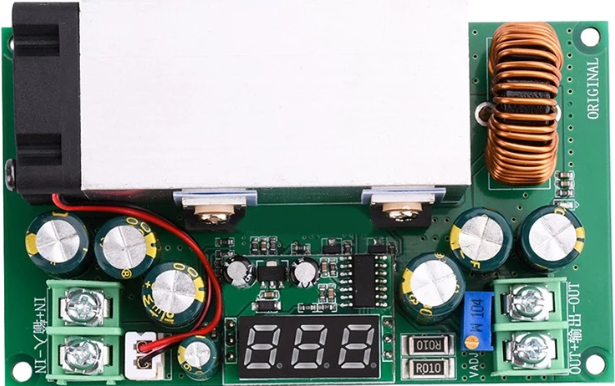
 Design with buck convertor in Cirkit Designer
Design with buck convertor in Cirkit DesignerIntroduction
A buck converter is a DC-DC power converter designed to step down voltage while stepping up current. It achieves this by using a combination of a switching element (such as a transistor), a diode, an inductor, and a capacitor. Buck converters are highly efficient and are widely used in applications where a stable, lower voltage is required from a higher input voltage source.
Explore Projects Built with buck convertor
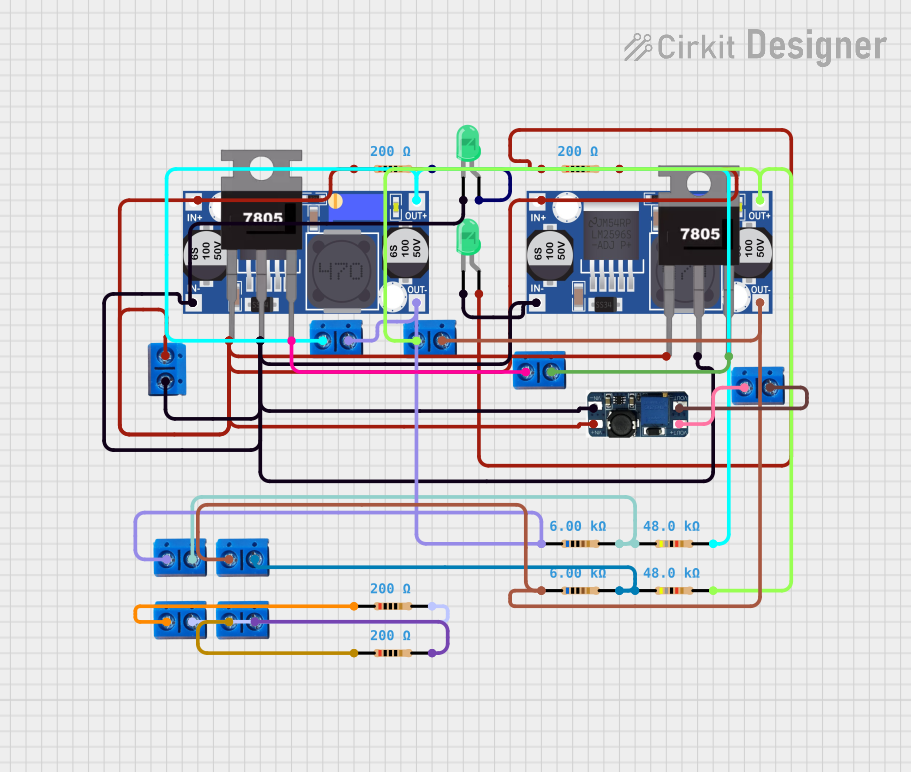
 Open Project in Cirkit Designer
Open Project in Cirkit Designer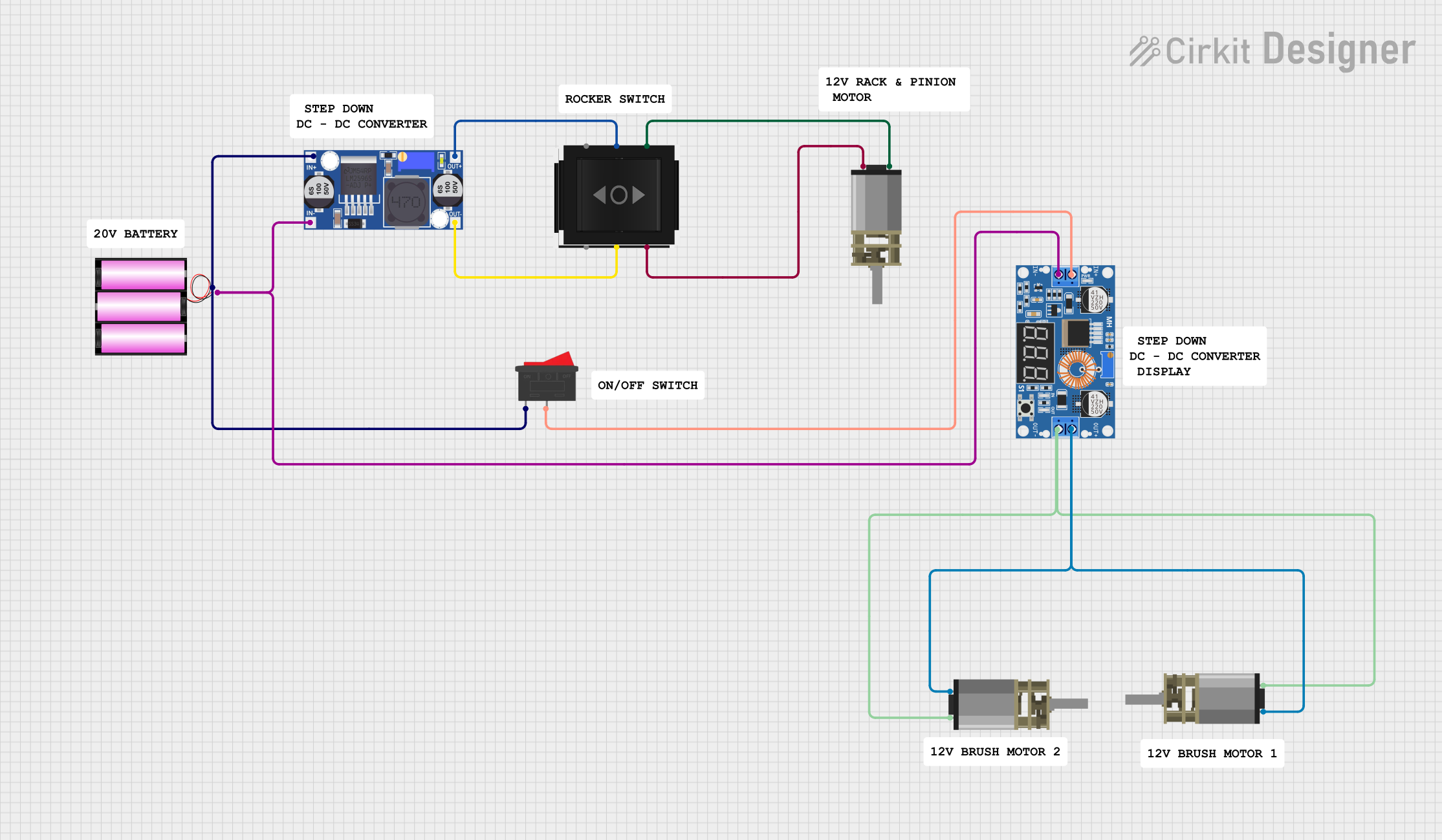
 Open Project in Cirkit Designer
Open Project in Cirkit Designer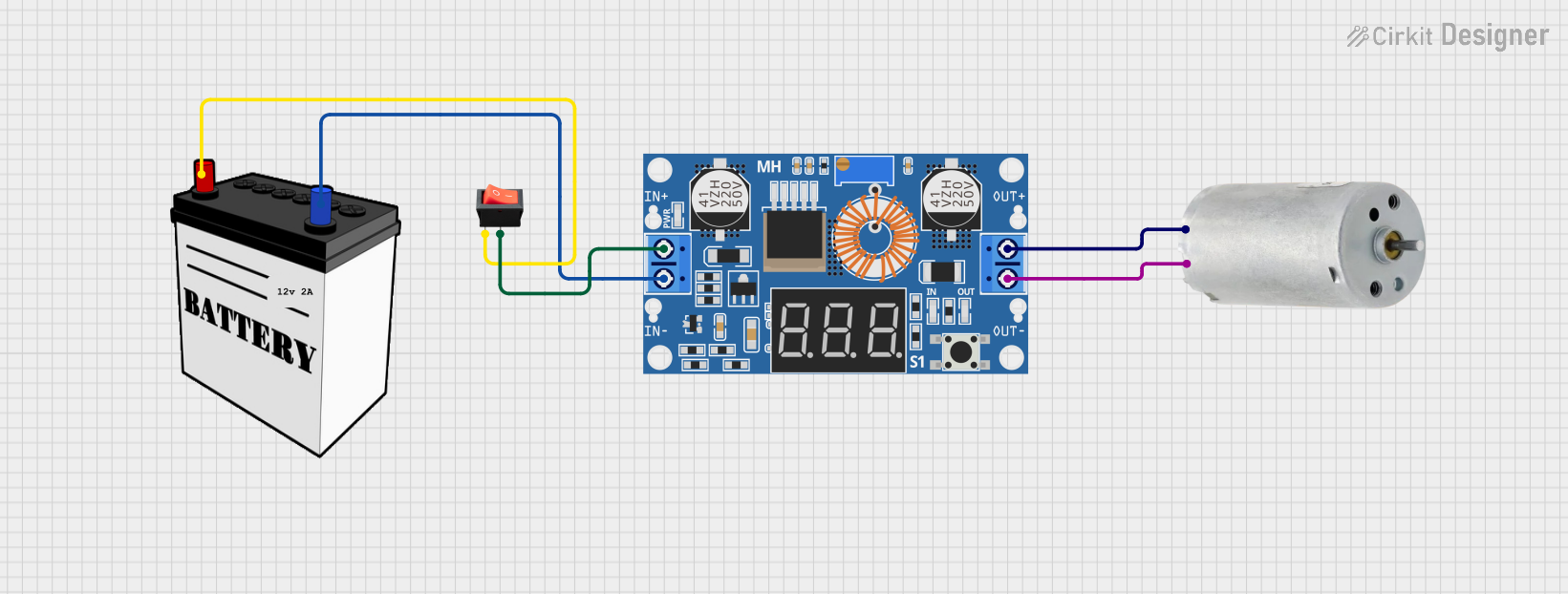
 Open Project in Cirkit Designer
Open Project in Cirkit Designer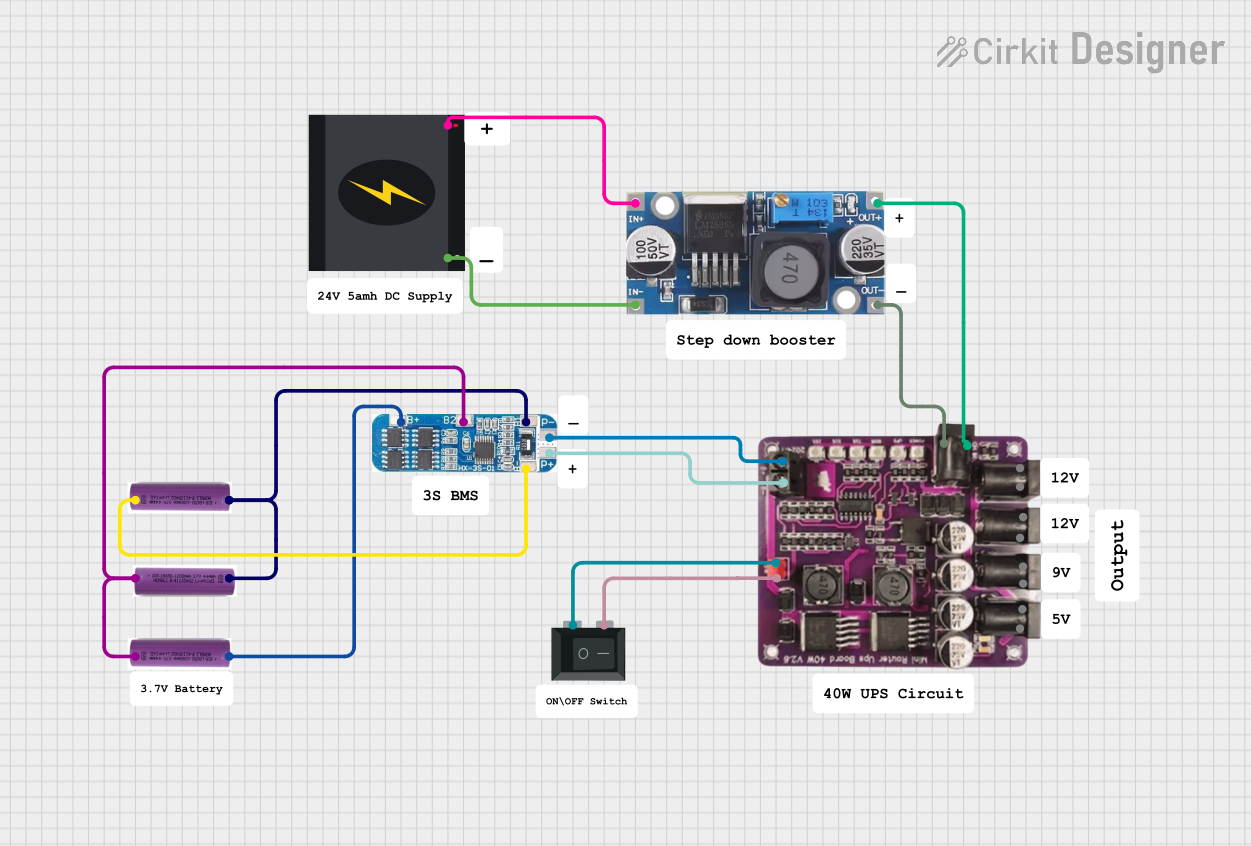
 Open Project in Cirkit Designer
Open Project in Cirkit DesignerExplore Projects Built with buck convertor

 Open Project in Cirkit Designer
Open Project in Cirkit Designer
 Open Project in Cirkit Designer
Open Project in Cirkit Designer
 Open Project in Cirkit Designer
Open Project in Cirkit Designer
 Open Project in Cirkit Designer
Open Project in Cirkit DesignerCommon Applications and Use Cases
- Powering microcontrollers and low-voltage devices from higher voltage sources
- Battery-powered systems to regulate voltage levels
- Voltage regulation in renewable energy systems (e.g., solar panels)
- Automotive electronics for stepping down 12V to lower voltages
- LED drivers and portable electronic devices
Technical Specifications
Below are the general technical specifications for a typical buck converter. Note that actual values may vary depending on the specific model or design.
Key Technical Details
- Input Voltage Range: 4.5V to 40V (varies by model)
- Output Voltage Range: Adjustable (e.g., 1.25V to 37V)
- Output Current: Up to 3A (depending on the design)
- Efficiency: Up to 95% (depending on load and input/output conditions)
- Switching Frequency: 100 kHz to 1 MHz (varies by model)
- Operating Temperature: -40°C to +85°C (typical)
Pin Configuration and Descriptions
The pinout of a buck converter module (e.g., LM2596-based module) is as follows:
| Pin Name | Description |
|---|---|
| VIN | Input voltage pin. Connect the higher voltage source here. |
| GND | Ground pin. Connect to the ground of the circuit. |
| VOUT | Output voltage pin. Provides the stepped-down voltage. |
| EN (optional) | Enable pin. Used to turn the converter on/off (active high). |
| ADJ (optional) | Adjustment pin. Used to set the output voltage (for adjustable models). |
Usage Instructions
How to Use the Buck Converter in a Circuit
- Connect the Input Voltage (VIN):
- Connect the positive terminal of the input voltage source to the VIN pin.
- Connect the negative terminal of the input source to the GND pin.
- Connect the Output Load (VOUT):
- Connect the positive terminal of the load to the VOUT pin.
- Connect the negative terminal of the load to the GND pin.
- Adjust the Output Voltage (if applicable):
- For adjustable buck converters, use the onboard potentiometer to set the desired output voltage.
- Measure the output voltage with a multimeter while adjusting the potentiometer.
- Enable the Converter (if applicable):
- If the module has an EN (enable) pin, ensure it is connected to a HIGH signal to activate the converter.
Important Considerations and Best Practices
- Input Voltage: Ensure the input voltage is within the specified range of the buck converter.
- Output Current: Do not exceed the maximum output current rating to avoid overheating or damage.
- Heat Dissipation: Use a heatsink or proper ventilation if the converter operates at high currents.
- Capacitor Selection: Use low-ESR capacitors for better performance and reduced ripple.
- Inductor Selection: Ensure the inductor value matches the design requirements for stable operation.
- Filtering: Add input and output capacitors to reduce noise and voltage ripple.
Example: Using a Buck Converter with Arduino UNO
Below is an example of using a buck converter to power an Arduino UNO from a 12V source:
- Connect the 12V source to the VIN and GND pins of the buck converter.
- Adjust the output voltage to 5V using the potentiometer.
- Connect the VOUT pin of the buck converter to the 5V pin of the Arduino UNO.
- Connect the GND pin of the buck converter to the GND pin of the Arduino UNO.
// Example Arduino code to blink an LED powered by a buck converter
// Ensure the buck converter is set to output 5V before connecting to Arduino
int ledPin = 13; // Pin connected to the onboard LED
void setup() {
pinMode(ledPin, OUTPUT); // Set the LED pin as an output
}
void loop() {
digitalWrite(ledPin, HIGH); // Turn the LED on
delay(1000); // Wait for 1 second
digitalWrite(ledPin, LOW); // Turn the LED off
delay(1000); // Wait for 1 second
}
Troubleshooting and FAQs
Common Issues and Solutions
No Output Voltage:
- Check the input voltage and ensure it is within the specified range.
- Verify all connections, especially VIN, GND, and VOUT.
- If the module has an EN pin, ensure it is connected to a HIGH signal.
Output Voltage is Incorrect:
- For adjustable models, recheck the potentiometer setting and adjust as needed.
- Verify the input voltage is stable and sufficient for the desired output.
Overheating:
- Ensure the load current does not exceed the maximum rating.
- Add a heatsink or improve ventilation around the module.
High Output Ripple:
- Add additional filtering capacitors to the input and output.
- Use low-ESR capacitors for better performance.
FAQs
Q: Can I use a buck converter to power sensitive electronics?
A: Yes, but ensure the output voltage is stable and free of excessive ripple. Adding filtering capacitors can help.
Q: What happens if I exceed the input voltage range?
A: Exceeding the input voltage range can damage the buck converter. Always check the specifications before use.
Q: Can I use a buck converter to step up voltage?
A: No, a buck converter is designed only to step down voltage. For stepping up voltage, use a boost converter.
Q: How do I calculate the required inductor value for a custom buck converter?
A: The inductor value depends on the input voltage, output voltage, switching frequency, and load current. Use the formula:
( L = \frac{(V_{in} - V_{out}) \cdot V_{out}}{f \cdot I_{out} \cdot V_{in}} ),
where ( f ) is the switching frequency and ( I_{out} ) is the output current.
By following this documentation, you can effectively use a buck converter in your electronic projects.